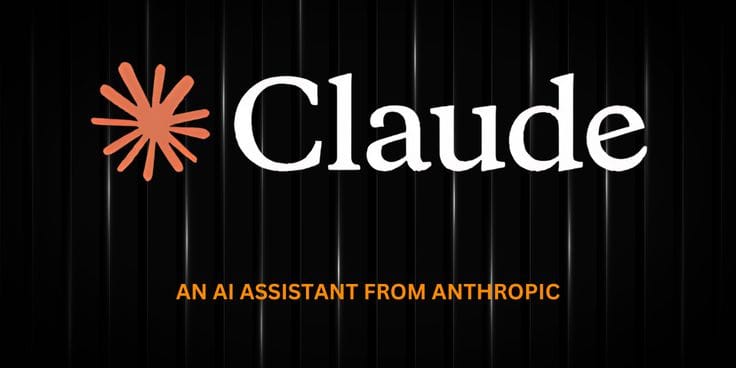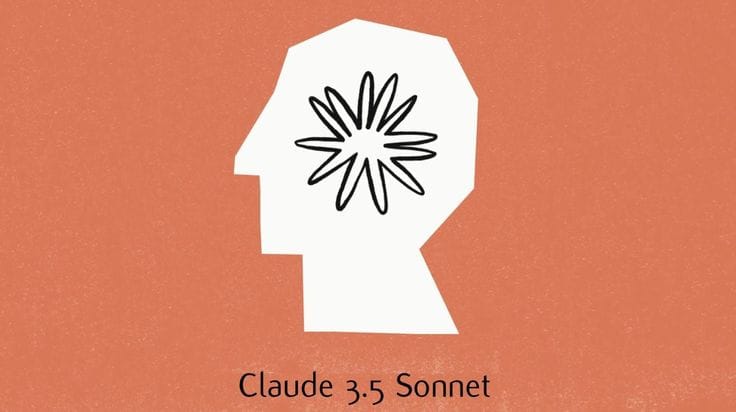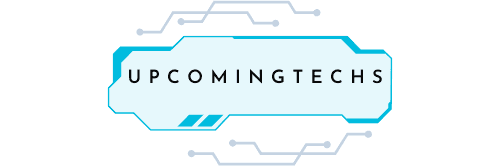In the challenging world of powerhouse big advanced artificial intelligence LLMs, Anthropic’s Claude 3.5 Sonnet can be considered as a breakthrough. This model was released in October 2024 and is an extension of the Claude 3 family model with added performance and versatility in its tasks. In this multi-faceted study, we will learn how this created Vision Claude 3.5 Sonnet differs from others while looking at its ability and potential in terms of AI and its usage.
Claude 3.5 Sonnet’s place in the current AI context. Claude 3.5 Sonnet is a member of Anthropic’s Claude 3 model series alongside with Claude 3 Opus and Claude 3 Haiku. Although each model in the family fits a particular purpose, Sonnet is unique because it offers both sophisticated reasoning and optimised performance. It is intended for solving intricate problems even though it requires speed and accuracy in practical use.
The decision to call this model ‘Sonnet’ lies in its structure – techinical and yet elegant as the form the lyrics in a sonnet common as an umbrella for. This iteration adds further to Anthropic’s constitutional AI principles including safety, reliability and, most vitally, conduct.
Key Capabilities and Features
The two that are most related to language comprehension concepts are:
Claude 3.5 Sonnet seems to have a good performance on a set of natural language processing tasks. It did not only know the context, the finer points, and the hidden message of the message as opposed to previous models. The system can:
- It is not only able to analyze the literal meaning of a question but also to understand what side the person is on.
- Another important recommendation is to keep context during long conversations
- Deal with the languages of many countries at a native level
- Be comprehending of and synthesise sophisticated psychological meaning.
- Of particular importance is the capability to work with large and very complex documents and to achieve this with relatively high rates of accuracy.
Indeed, for the programming community, Claude 3.5 Sonnet provides specific rich functions. It doesn’t do just that; it creates clean, well-documented solutions to cross-cutting problems across different programming languages. The capability to detect and fix problems in code and enhance the work, is highly useful for software developers. More importantly, it can translate complicated algorithms and concepts having to do with technology in layman terms, which makes it ideal for connecting technical and non technical personnel. Subsetting and such decisions over system structure, in addition to the guidance it provides over secure coding practices, provides further value to its programming facilities.

Applications and Use Cases
Enterprise Applications
Claude 3.5 Sonnet’s capabilities make it particularly valuable for enterprise environments:
Hence the model can be used by organizations for analysis of data, reporting and business intelligence. This makes it to play a role in the formulation of decisions and strategies from analysis of large body of material. The model may help with regard to customer-service issues, internal record-keeping, and process improvement.
Introduction In order to classify, research and group similar writing, it is necessary to conduct scientific research and apply theoretical knowledge.
In academic and research settings, Sonnet proves invaluable for:
The model is used to formulate hypotheses, to identify potential experiments, and to guide literature reviews. It can assist a researcher to have an insight of the data patterns and possibly even offer directions for research. For this reason, it is quite useful for tutorial applications, which involve the clarification of hard to understand ideas and principles, as well as academic writing.
Software Development
For developers and technical teams, Sonnet offers:
The model saves cycles by generating code and reviews, and frees up human time to work on creation rather than paperwork. It also supports documentation and translates IT terms to other members of the company. Because of its capability of identifying system architecture, it can be valuable during systems planning and optimization.
Implementation and Integration Nowadays
API Access and Implementation
Claude 3.5 Sonnet can be got through Anthropic API to ensure it is compatible with existing architectures. Using the identifier of the model developers can input the data as “claude-3-5-sonnet-20241022”. Being an API, it interfaces with different languages and supports most of the frameworks that developers implement.
Responsible AI Usage
While powerful, Claude 3.5 Sonnet comes with important ethical considerations:
Measures are prevented from the model to minimize on the hazardous results of the learnt function. It is recommended that users should be aware of the biasses inherent in rating and should put in place means of checking these. Anthropic ensures that the model operates correctly through constitutional AI principles which act as a constitution.
This is more true when it comes to problem-solving issues where the analytical features of Claude 3.5 Sonnet stands out. Unlike dpb earlier AI systems may also be challenged in multi-step reasoning, Sonnet is especially effective at analysis and identifies complexity issues in terms of constituent components. It leads the users through solutions and analyses its processes systematically with reasoning and detailing out possible paradoxes or mistakes at the same time. This systematically developed method is also reflected in its application of analytical frameworks, construction of arguments and possibilities for counterarguments.

Known Limitations
Understanding the model’s limitations is crucial:
Nonetheless, before commending Sonnet for all that it can do, one must discuss the principles of the tool and its drawbacks, as well. Like any other automated information system, it can from time to generate paranoid information or hallucination – information that looks credible but sounds very wrong. It has an ‘expiry’ date, and the best results can be achieved with prompt engineering realisation. Therefore, while implementing the oversight and verification, organizations should consider special cares and precautions and possible biases. They mentioned that with the help of constitutional AI principles, Anthropic does not conduct its operations recklessly, however, the user should apply necessary caution and judgment.
- Relatively the chance of having hallucination in certain circumstances
- Limited knowledge cutoff date
- As for point, precision becomes an important facet in the common test since prompt engineering is required.
- Complex activities, therefore, relate to the amount and kind of resources that such tasks require.
- The need to have human intervention and check or approval.
Evolution of AI Capabilities
Claude 3.5 Sonnet represents a significant step in AI development:
The model shows how now such systems can be made to incorporate high level reasoning together with practical uses. In its possibilities it pointed to further evolution of the experience in more sophisticated comprehension. Recognising the relationship of performance with safety, the model creates the benchmark for further models of AI.
Industry Impact.
The model’s introduction has implications for various industries:
- Higher rate of uptake of AI solutions in large business environments
- The following changes are proposed in the Content Creation Process and the Software Development Process.
- Typology of customer service and support systems
- Improvement in research and academic parameters
- It entails a change of creative and other technical processes.
Conclusion
Claude 3.5 Sonnet is a major step forward in artificial intelligences as it has strong practical applications coupled with advanced performance. Due to the balanced functioning in its capabilities, the program is useful for many tasks, ranging from writing creative texts to analyzing technical material. Nonetheless, the model is strong and effective providing that its application is well and adequately planned as well as its capacities and potentials as well as its weaknesses and liabilities are thoroughly recognized.
As AI technology advances, Claude 3.5 Sonnet is not only the current reference for strengths and limits of AI technologies, but also a preview of what is to come. Its development is due to a change in how the industry approaches the usage of AI as it has shifted more towards the advancement of better and efficient as well as more moral AI solutions.
The primary value of Claude 3.5 Sonnet is not so much in the technological improvements that it possesses, but in its ability as a tool to supplement human activity in a variety of processes. With organizations and people looking for more uses for the model, the effects on different industries and uses of the model will likely expand over time.
